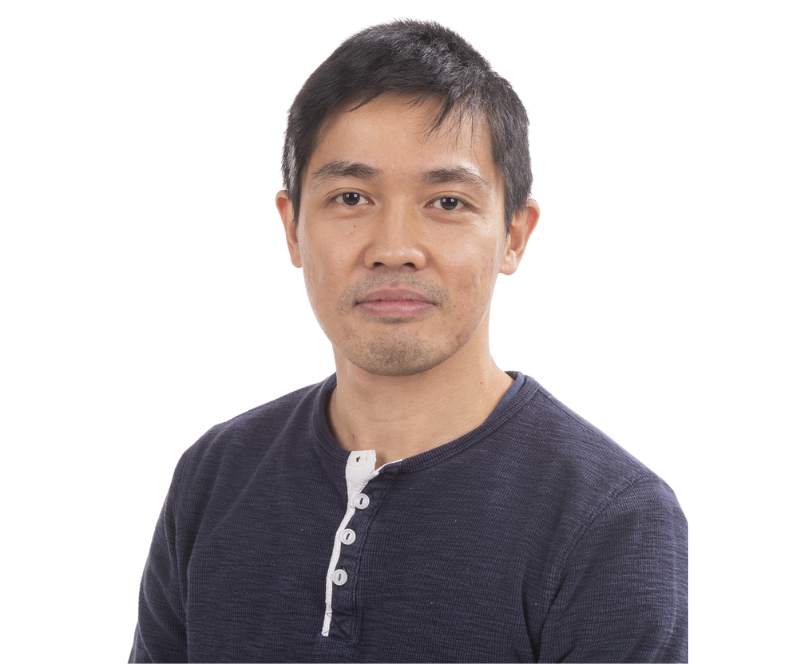
Assistant professor
Affiliation
Faculty of Medicine at Université de Montréal
Research Axes
Team
- Nicolas Paradis-Isler, Ph.D
- Samantha Yuen
- Saber Saharkhiz
With a PhD in Life Science, Yoshiaki Tanaka heads the Functional Genomics and Bioinformatics Research Unit at Hôpital Maisonneuve-Rosemont. He is also an assistant professor in the Faculty of Medicine at Université de Montréal.
His team works on cellular and molecular mechanisms of tumor invasion, growth, and drug resistance using in vitro 3D culture models of human cells and in silico analyses of large-scale genomic data including single-cell RNA-seq, ATAC-seq, ChIP-seq and Hi-C. The goal of his laboratory is to elucidate molecular insights that regulate tumor progression and metastasis and lead future therapeutic development.
Research Unit
This research unit studies brain tumor initiation and progression. Glioblastoma mulforme (GBM) is the most predominant malignant brain tumor, and exhibits dismal prognosis thereby devastating the lives of patients and their families. GBM is treated by surgery, radiotherapy, and chemotherapy with initial positive response, but is rapidly recurrent with few treatment options. Therefore, a better understanding of molecular underpinings of the tumor recurrence and drug resistance is essential for development of more therapeutic options.
In vitro 3D culture model
Rodent-based models are essential to understand the mechanism of GBM initiation and progression. However, rodents differ on genetic and molecular levels compared to human, resulting in vastly dissimilar responses to anti-tumor drug treatment. Over the past few years, we have developed and improved in vitro 3D culture models for human brain tissue, called brain organoids, that recapitulate microenvironment of developing brain. Using this unique systems, our team investigates cancer-normal cell interactions and drug responses.
Artificial Intelligence and Machine Learning
The complexity of cellular interaction and cellular state dynamics gives rise to substantial challenges to develop robust computational approaches that can consider interconnected networks in highly dimensional spaces from large-scale genomic datasets, such as single-cell transcriptome profiling. Artificial intelligence (AI) simulates human intelligence in the computer by learning patterns and features from data and drawing solution to a given task. Machine learning (ML) is a subset of AI and can model cellular events from massive amounts of data to derive meaningful biological conclusions. Our team takes an advantage of AI and ML techniques to dissect molecular events from the genomic datasets.
Publications
Voir toutes les publications-
L. Adams, M.K. Song, Y. Tanaka# and Y.-S. Kim#. Single-nuclei paired multiomic analysis of young, aged, and Parkinson's disease human midbrain reveals age-associated glial changes and their contribution to Parkinson's disease. medRxiv, #Co-autheurs correspondants.
More detail -
Dysregulation of BRD4 function underlies in MeCP2 mutant neurons. Molecular Cell. Xiang* Y, Tanaka Y*, Patterson B, Hwang SM, Hysolli E, Cakir B, Kim KY, Wang W, Kang YJ, Clement EM, Zhong M, Lee SH, Cho YS, Patra P, Sullivan GJ, Weissman SM, Park IH. 2020;79(1):84-98. * Contribution égale.
More detail -
Synthetic analyses of single-cell transcriptomes from multiple brain organoids and fetal brain. Tanaka Y, Cakir B, Xiang Y, Sullivan GJ, Park IH. Cell Reports. 2020;30: 1682-1689.e3.
More detail -
Development of human brain organoids with functional vascular-like system. Cakir B, Xiang Y, Tanaka Y, Kural MH, Parent M, Kang YJ, Chapeton K, Patterson B, Yuan Y, He CS, Raredon MSB, Dengelegi J, Kim KY, Sun P, Zhong M, Lee SH, Patra P, Hyder F, Niklason LE, Lee SH, Yoon YS, Park IH. Nature Methods. 2019;16:1169-1175.
More detail -
hESC-derived thalamic organoids form reciprocal projections when fused with cortical organoids. Xiang Y*, Tanaka Y*, Cakir B, Patterson B, Kim KY, Sun P, Kang YJ, Zhong M, Liu X, Patra P, Lee SH, Weissman SM, Park IH. Cell Stem Cell. 2019;24:487-497.e7. * Contribution égale.
More detail -
Uhrf1 regulates active transcriptional marks at bivalent domains in pluripotent stem cells through Setd1a. Kim KY*, Tanaka Y*, Su J, Cakir B, Xiang Y, Patterson B, Ding J, Jung YW, Kim JH, Hysolli E, Lee H, Dajani R, Kim J, Zhong M, Lee JH, Skalnik DD, Lim JM, Sullivan GJ, Wang J, Park IH. Nature Communications. 2018;9:2583. * Contribution égale.
More detail -
Fusion of Regionally Specified hPSC-Derived Organoids Models Human Brain Development and Interneuron Migration. Xiang Y*, Tanaka Y*, Patterson B, Kang YJ, Govindaiah G, Roselaar N, Cakir B, Kim KY, Lombroso AP, Hwang SM, Zhong M, Stanley EG, Elefanty AG, Naegele JY, Lee SH, Weissman SM, Park IH. Cell Stem Cell. 2017;21:383-398.e7. * Contribution égale.
More detail
Education
Associate Research Scientist
Department of Genetics, Yale School of Medicine, New Haven, USA
Postdoctoral Associate
Department of Genetics, Yale School of Medicine, New Haven, USA
Postdoctoral Fellow
Institute of Medical Sciences, The University of Tokyo, Tokyo, Japan
PhD in Life Science (Bioinformatics)
Graduate School of Frontier Sciences, The University of Tokyo, Tokyo, Japan
MSc in Life Science (Bioinformatics)
Graduate School of Frontier Sciences, The University of Tokyo, Tokyo, Japan
BSc in Pharmaceutical
Science Faculty of Pharmaceutical Sciences, Tokyo University of Science, Tokyo, Japan
Awards
- 2020 Junior 1 Research Scholar (Fonds de recherche du Québec - Santé)
